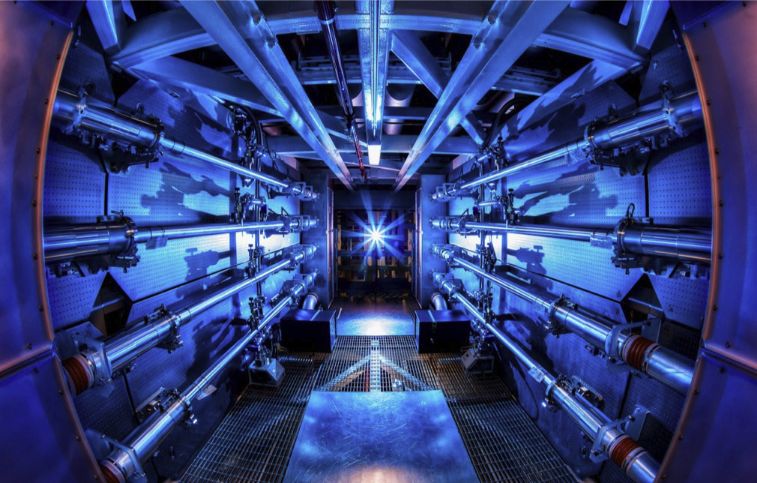American scientists have reached a significant milestone with nuclear fusion, the technology regarded as the holy grail to solve the climate crisis. The path to a commercial breakthrough is still lengthy, but with energy, it is never too late.
The US Department of Energy made a major announcement last week that nuclear fusion has reportedly enabled American scientists to produce more energy than they consume for the first time. This achievement is significant in the multibillion-dollar race to develop technology with the potential to generate limitless clean energy.
On paper, nuclear fusion has numerous advantages over nuclear fission. Nuclear fusion produces no greenhouse gases or nuclear waste with a long half-life. After 120 years, radioactive radiation dissipates, whereas nuclear waste from nuclear fission remains hazardous for tens of thousands of years. Furthermore, the supply of the required fuel, specifically hydrogen, is practically limitless.
Since the 1950s, billions of dollars have been poured into developing nuclear fusion technology, but the timeline for its implementation has always remained the same.
Laser research at the Lawrence Livermore National Laboratory in California suggests that nuclear fusion could take some time to reach a commercial stage. In an experiment resembling ultra-powerful lasers being fired at a tiny drop of hydrogen plasma, scientists have achieved a net energy gain for the first time. The process of nuclear fusion means that atoms are compressed due to the high pressure and heat generated by the lasers.
Nuclear fusion is the same process that powers the sun. When the nuclei of two hydrogen atoms fuse at high temperatures, the gas helium is produced. In this process, neutrons that emit energy are released. Theoretically, it is possible to construct a power plant that provides a virtually inexhaustible energy source by simulating this very same reaction on Earth.
Nuclear fusion can be accomplished in two ways: by heating and compressing atoms with ultra-powerful lasers or colliding them at an extremely high temperature and velocity in a vacuum-drawn space.
Last Tuesday, the reaction that broke the news produced 2.5 megajoules of energy, while the process consumed only 2.1 megajoules. The research facility has confirmed these results, and “a successful experiment” is generally discussed by people in the know. Apparently, the reaction was stronger than anticipated and would have damaged some equipment, making analysis more difficult.
In Europe, a breakthrough in nuclear fusion occurred earlier this year. The Joint European Torus (JET), the world’s largest nuclear fusion machine, generated a record amount of energy in a different manner.
Commentators discuss a historical event and a game-changing development. In contrast to their American counterparts, European scientists achieve nuclear fusion by floating plasma of hydrogen isotopes at tremendous speeds in a vacuum donut. They fuse when the atomic nuclei reach 150 million degrees Celsius and collide. This fusion produces neutrons whose heat is transferred to a shell of liquid metal, such as lead or lithium. This heat is used to generate steam for a steam turbine to generate electricity.
The experiment produced 59 megajoules of energy, despite requiring less energy to initiate the reaction. European researchers are scaling up this process to achieve a net energy gain at the new internationally funded ITER complex, which has an estimated cost of 20 billion euros.
The US findings are the greatest breakthrough in the long history of nuclear fusion research. Commentators in the industry discuss a game-changing and historic event.
However, scientists caution against excessive enthusiasm. The achievements do not alter the fact that the commercial breakthrough of nuclear fusion is still decades away. Scaling up the process is fraught with dangers. For instance, it is still searching for materials that can withstand nuclear fusion conditions for extended periods. Nonetheless, each step forward is a step in the right direction.
Elsewhere, it is mentioned that the overall energetic picture of the experiment remains negative. The laser beam is extremely inefficient in energy use, as its production requires an amount of energy that is a multiple of what is ultimately produced.
Existing technologies, such as solar panels that can convert electricity into hydrogen, are becoming less expensive. This reduction of cost, according to skeptics, calls into question the economic viability of nuclear fusion, which requires investments of billions of dollars.
In the future, all energy sources will be required. As society continues to digitize, energy-intensive server farms will proliferate. Consequently, the demand for diverse energy sources will continue to rise. For that reason, we must continue to wager on every option.
Furthermore, existing renewable energy sources have significant disadvantages. Wind and solar energy may be inexpensive but do not last as long as a nuclear reactor. We are still determining how to proceed with wind turbines that need to be replaced. Giant blades are currently buried in the desert in the United States, which is not a favorable solution. Used solar panels require long-term storage because we have yet to discover how to recycle silicon.
Considering that only 2% to 2.5% of the energy produced today comes from wind and solar, even though we have been doing this for 20 years, you may begin to realize that any new clean source of energy is welcome.












